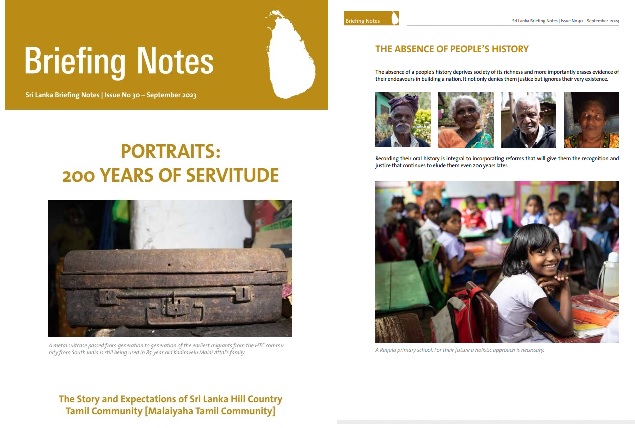Two hundred years on since South Indian Tamils were brought to Sri Lanka by British colonisers to work on the plantations, their lives have seen little change.
The history of the Sri Lanka Hill Country Tamil community dates to the 19th century during the British colonial period. The British, who ruled Sri Lanka at the time, introduced a plantation economy focused on growing tea, coffee, and rubber. To meet the labour demands of these plantations, they brought in large numbers of Tamil workers from southern India.
Inter-changeably known as Hill Country Tamils (HCT) or Malaiyaha Makkal, they constitute 1.5 million of the population and are mostly fifth and sixth-generation descendants. In this report, the term HCT will be used.
The first groups faced the rigours of a sea voyage, a 130 to 160-mile trek from Talaimannar to the Central Hills, and battled inhospitable terrain, sharply contrasting climates, cholera, smallpox, and little or no access to medical facilities. On the plantations, they were at the mercy of the Kanganis (Tamil supervisors belonging to the “upper classes”) and with no effective wage legislation, forced to work even when ill. They endured callous neglect by planters.[i]
These Tamil workers were primarily from the “low caste” communities and were recruited through labour agreements known as “kanganies.” The kanganies acted as middlemen, responsible for recruiting and managing the labour force. The workers were brought to Sri Lanka under indentured labour contracts, often leading to harsh working conditions and limited rights.
Although there are no visible cemeteries of generations of the HTC community who worked and died there Periya Kanganies’ ( head supervises) tombs stand high in plantation areas.
The Tamil workers settled in designated plantation areas, mainly in the central highlands of Sri Lanka, such as Nuwara Eliya, Hatton, and Badulla. Later settlements expanded to law lands as well. They lived in line rooms, which were basic housing units provided by the plantation companies. These line rooms were often overcrowded and lacked proper sanitation and infrastructure.
During this period, the Hill Country Tamil community faced various challenges, including exploitative labour conditions, low wages, and poor living conditions. They were subject to long working hours, minimal legal protections, and restricted mobility. The workers and their families were isolated from the rest of society and experienced social and economic marginalization.
Following Sri Lanka’s independence in 1948, the plantation workers faced further difficulties. The government implemented policies that favored the majority Sinhalese population, which led to the marginalization and discrimination of the Tamil community, including the plantation Tamils. The plantation Tamils were often denied citizenship rights, faced language barriers, and had limited access to education and healthcare.
[i] The plantation people of Sri Lanka: towards a study of colonialism and other variables affecting their status and role – p. Capersz
Read the report as a PDF: SLB Briefing Note 30. Sep 23 The Story and Expectations of Sri Lanka Hill Country Tamil Community
